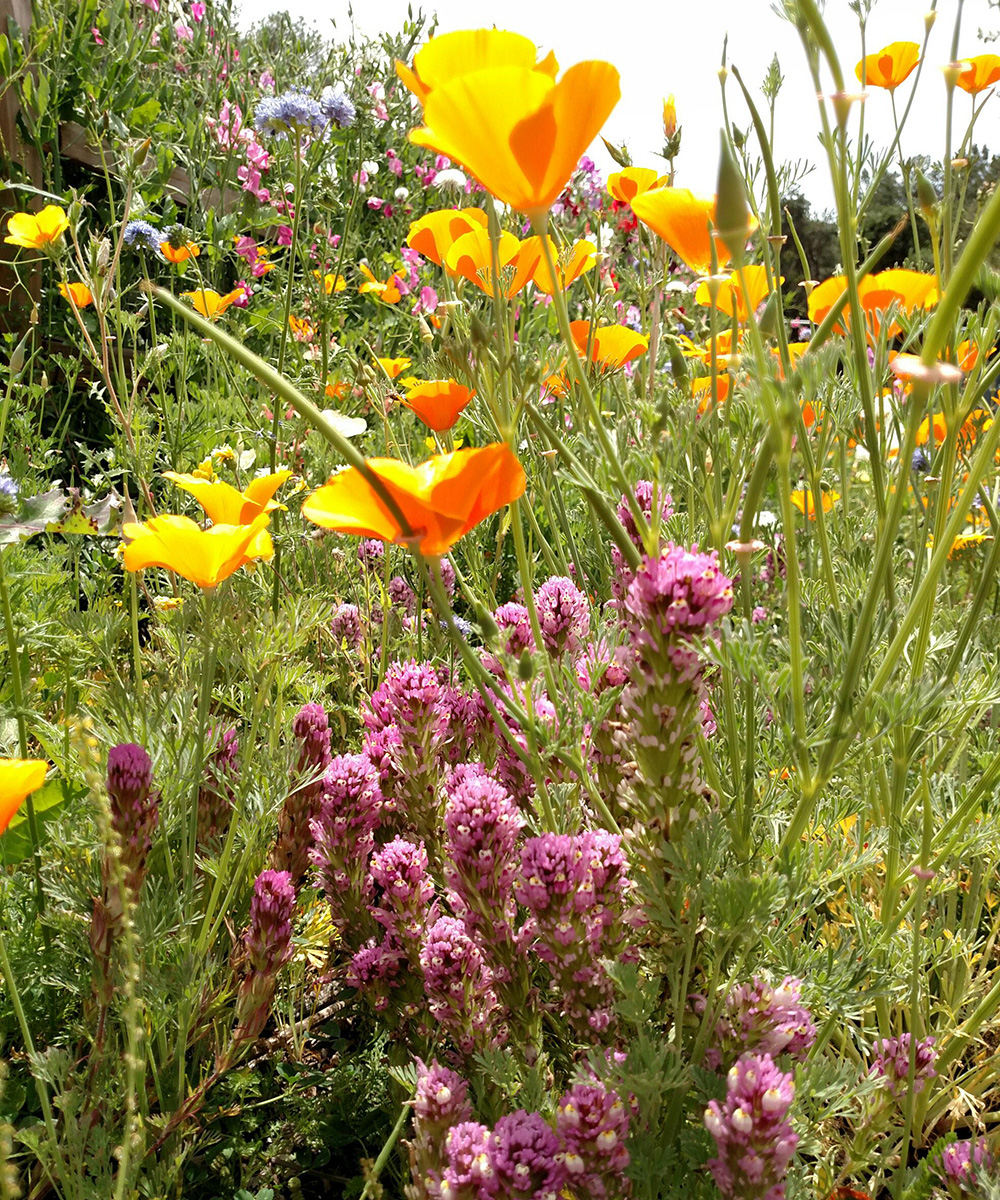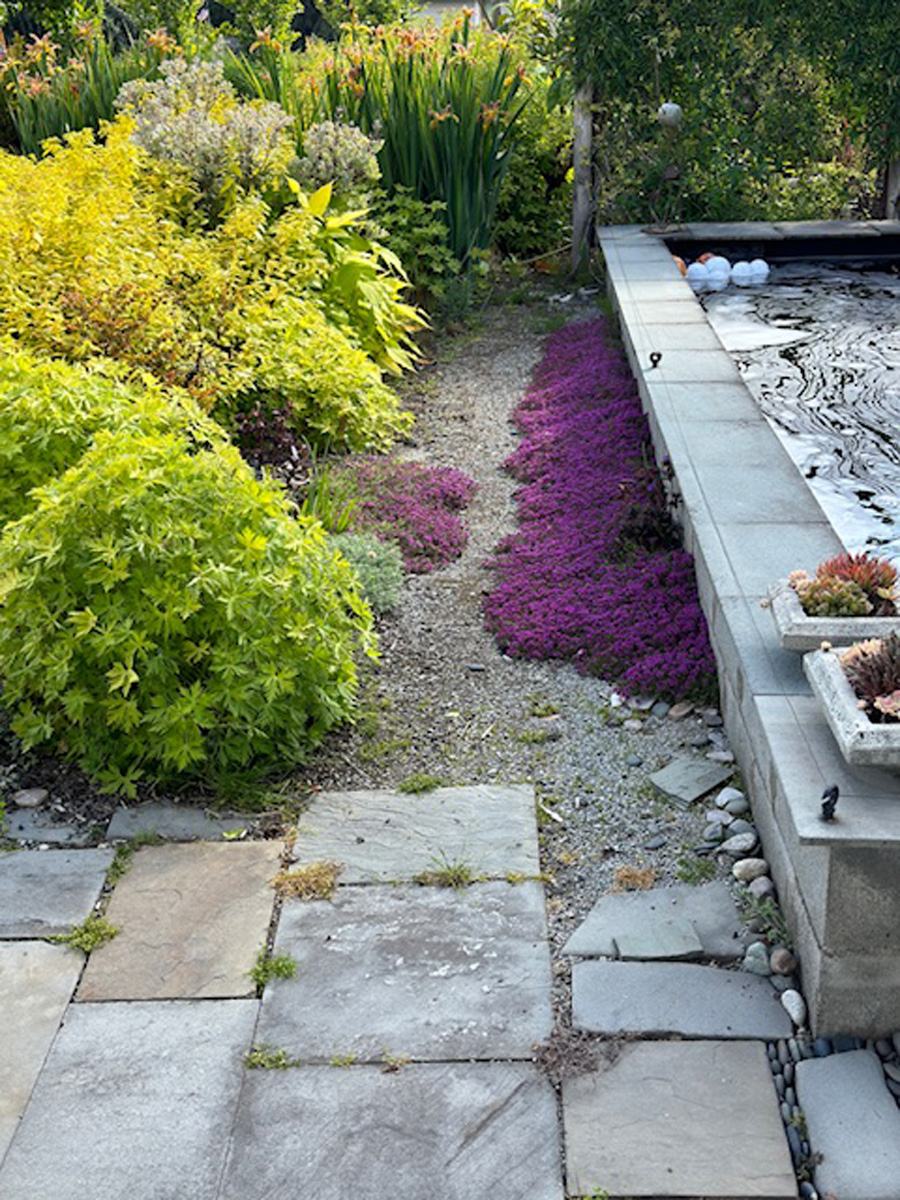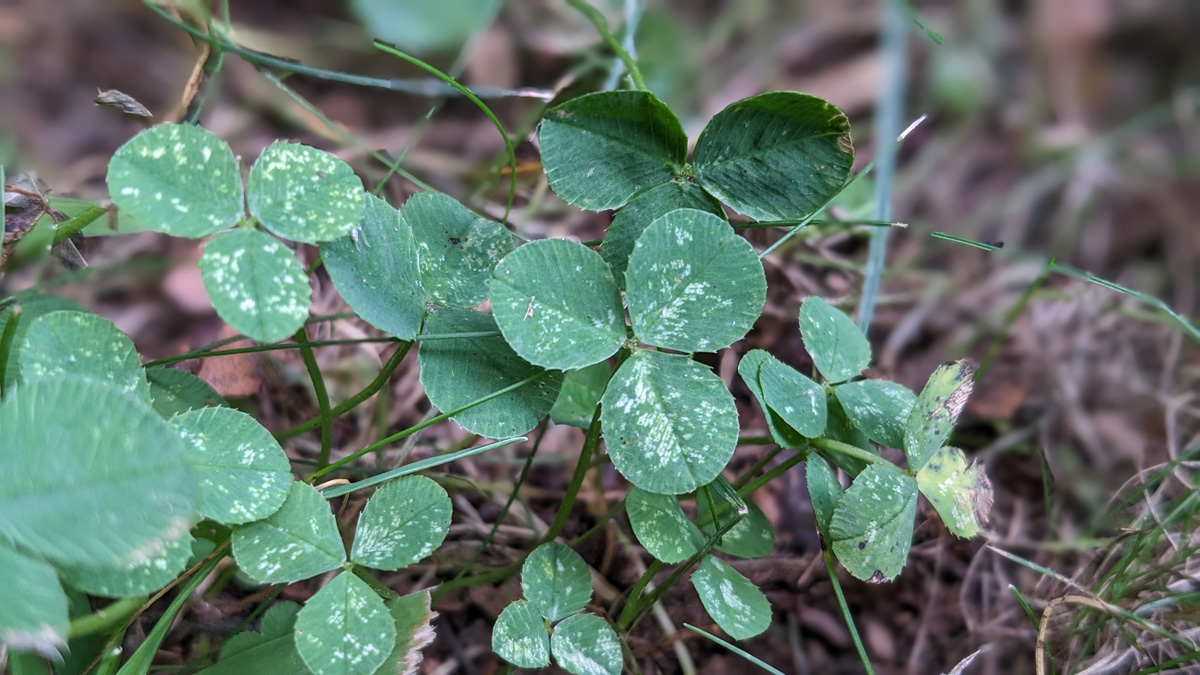There is nothing quite like a lawn to really set off a planting bed. A frame is created with the grass below and the sky above. I have a dog, and she loves the lawn. Children and grandchildren also need a place to romp and run, while yard games like cornhole and croquet are played by all ages. Most of us, however, are now realizing the importance of practicing better resource management and using little to no chemicals in our landscapes, which means it’s time to rethink the lawn.
Lawn seed mixtures are now available with low-grow, no-mow seed. This type of lawn doesn’t require fertilizer or chemicals to keep it growing. It also is not a thirsty turf, like traditional yards. It will never look like a golf course, but that is seldom the look gardeners care for anyway. The following are three ways that I have rethought the idea of lawn within my own property or the property of my garden design clients.

Stop mowing, and interplant perennials or bulbs
I inherited about 3 acres of lawn when I purchased my house. Instead of ripping up the existing turf (and destroying the soil structure) I’ve chosen to stop mowing many areas, and intersperse the turf with bulbs and wildflowers. The amount of wildlife, pollinators, and birds that use these areas now is truly amazing. In other areas I will still occasionally mow, but I have purposely planted an array of perennial ground covers (see bulleted list below). These low-growing plants have continued to spread over time, taking over more and more of the turf, which I don’t mind. I love the flowers that spread throughout the lawn, blooming at different times. I also don’t water these areas of “lawn,” because the ground covers help keep the expanse looking green in summer.
- Creeping bugleweed (Ajuga reptans* and cvs., Zones 4–9)
- English daisy (Bellis perennis* and cvs., Zones 4–8)
- Creeping speedwell (Veronica repens and cvs., Zones 4–9)
- Blue star creeper (Isotoma fluviatilis, Zones 5–9)

Reseed the turf areas with a wildflower mix
If you want to go one step further and remove all your turf, you can replace it by reseeding the areas with special mixtures of grass seed and wildflowers. These premixed bags often include many of the creeping perennials above and throw in some annuals like sweet alyssum (Lobularia maritima*, annual) as well. These, along with a base of native grasses, make a tough lawn that can tolerate foot traffic and mowing, with the added benefit of beauty. Read the packages carefully—some are true wildflower meadow mixes and would get too big for a traditional lawn. Other mixes contain seeds of plants that can be problematic to certain areas of the country (English daisy is on the noxious weed list in Oregon, for example), so choose your mix carefully.

Abandon the idea of a “lawn space” altogether
Creating a lawn-like space with no grass or grass-like plants at all is also becoming more popular. Red thyme (Thymus praecox ‘Coccineus’, Zones 3–8) makes a great “lawn.” Extremely drought tolerant, this plant forms a dense mat and flowers during early summer. It is also evergreen. Elfin thyme (Thymus serpyllum, Zones 3–8) has a lovely blue cast to the leaves, and purple flowers. Both these plants are sun loving, can take light traffic, and require some pruning, but no mowing, to create a matted look.
Any alternative is better than the weed-free, highly chemicalized, overwatered, manicured lawns of yesterday. Grow a greener world in your own backyard.
QUESTION AND ANSWER
Why not try microclover as a lawn replacement?

One of best lawn-alternative plants I’ve tried is microclover, which are smaller varieties of white clover (Trifolium repens var. ‘Pirouette’ and ‘Pipolina’, Zones 3–10). This is a great choice for gardeners who want to transition away from grass but still have a tidy lawn. Microclover is drought tolerant, has a dense growth habit, and matures to 4 to 6 inches tall. It can be mowed and doesn’t flower, which is important for barefoot players. It can take sun or shade. An added benefit is because it is a legume, it fixes nitrogen from the air into the soil and provides its own green fertilizer.
To discuss these ideas or ask other gardening questions, chat with the author on the Gardening Answers forum.
To read more on Pacific Northwest gardening, go here.
*This plant can be considered invasive in select regions of the United States.
—Susan Calhoun is the owner of Plantswoman Design in Bainbridge Island, Washington.
All photos except where noted: Susan Calhoun
